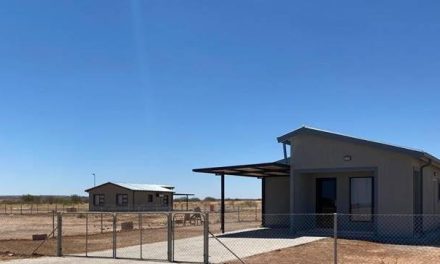
South African milk production slows down
According to the South African Milk Producers’ Organisation (MPO) there is a slight slowdown in milk production growth. This comes at an opportune time when Namibia was struggling with competition from lower priced milk imports from South Africa.
The first seven months of 2015 recorded 10,6% higher than during the same period last year. This is
despite negative sentiments about South Africa’s growth forecasts for 2015 and 2016 being graded downwards by the International Monetary Fund (IMF).
Cheaper South African milk imports threatened Namibia Dairies as the company attempted to lobby for further intervention as milk imports are increasingly threatening the local dairy industry with cheaper prices.
Although Namibian production has gone up by 10 %, Chairperson of the Dairy Producers Association, Japie Engelbrecht said that the industry has a 6 month lifeline until the Namibia dairy industry and its value chain become obsolete.
The price per litre that South Africa’s milk processors pay producers is R4.40 compared to N$5.54 in Namibia. South African milk exports exceeded imports by 11-million litres in the first six months of 2015.
Despite a 13 % growth for the Namibian dairy industry from January 2015 to June 2015. Economies of scale are forcing producers to produce more and more which Engelbrecht said after import restriction in 2013 will take 3 years to reach normal production.
According to the South African Milk Producers Organisation, higher global prices and a weaker rand since the start of 2015, moved import parity to levels above the producer price again. A weakening rand partially isolated SA import prices against the weaker international market. However, the decrease in international product prices since March 2015 pushed import parity below producer prices again.
Comparing the two countries, Namibia produces 23 million litres of milk annually which is 1 % of the South African market which has 3 % of global market share. This is shown by the July 2015 production of 6,9% higher than July 2014 in comparison to monthly increases of between 9% and 13% in previous months.
Managing Director, Gunther Ling of Namibia Dairies said last month that they approached the
Namibia Trade Forum and the Namibia Competition Commission in lodging anti-dumping complaint against South African milk producers which was unsuccessful.
Ling described the collapse of the local dairy industry and related industries as a perfect storm due to the fact that there is a global dairy crisis forcing Namibia and South Africa to stall large volumes of milk from flooding local markets.
Botswana is also in a similar situation as it is producing too little while relying on imports.
Retail sales of dairy products continue to grow at higher retail prices even with South African consumer debt decreasing while disposable income grew by 5% while the economy grew by 1,3% in the first quarter of 2015, slowing down to -1,3% in the second quarter.
During 2014 dairy products equalled to 431-million litres of milk were exported, the same as in 2013. January to June 2015 exports of 199-million litres were 0,4% lower than exports during the same period in 2014.
Higher grain prices in the country and an expected increases in electricity cost, roughage availability as well as lower quality silage and announced producer prices decreases may contribute to a further slowdown in production growth.
“My personal opinion is that we as producers are busy on a downward path, but at this stage it is not critical yet. With increased fodder prices, fuel and electricity tariffs, we as an intensive industry will have to look at our strengths to produce at a cheaper price.” Engelbrecht said to dairy farmers adding that the industry finds itself at the same situation as in 2013.
It is the wish of the Dairy Producers Association together with Namibia Dairies that government makes a decision to make subsidies available to farmers or risk having the industry collapse or totally restrict imports.
“Looking at the increased prices in South Africa and that their dairy imports have increased, then we understand why South Africa producer prices are waning,” the Chairperson of the Dairy Producers Association said.













































